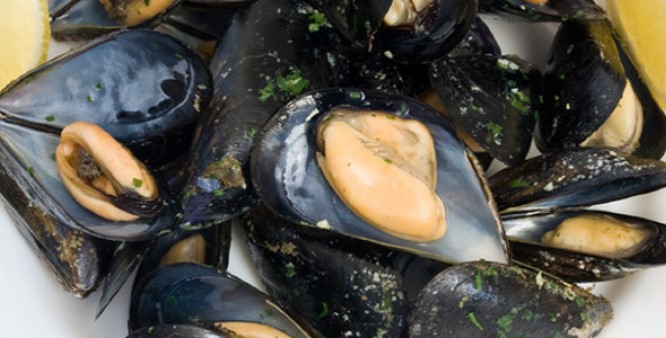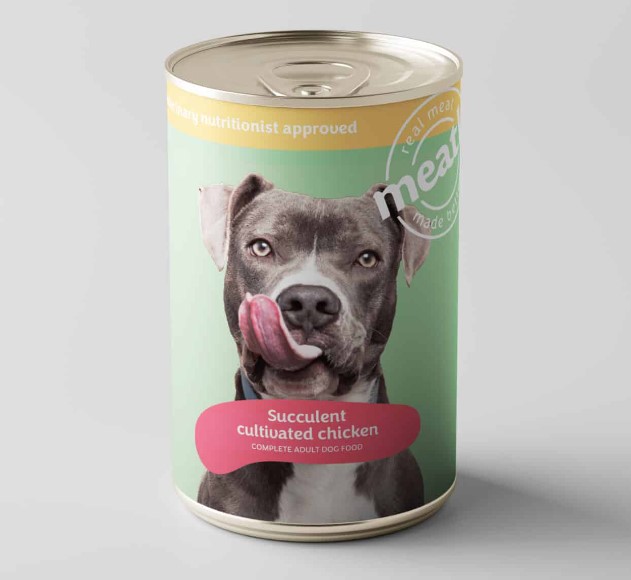Australian blue-lipped mussels are a wonderful source of nutrition for both yourself, and your dog, but this fact isn’t as well known as you may think.
Most of the time we hear about green-lipped mussels, particularly those from New Zealand where they’re found in abundance.
In Australia, however, we have the alternative blue-lipped mussels.
When it comes to really high-end dog foods you’ll find green-lipped mussels in almost all New Zealand brands, but when you consider Australian equivalents such as Eureka (an Aussie Ziwi Peak) we naturally find the Australian equivalent of blue-lipped mussels. But how do they compare?
Here’s all you need to know about Australian blue-lipped mussels, and the Australian mussel industry:
The Australian Mussel Industry & Growing Environment
The Mussel Industry in Australia is relatively small compared with some other countries of the world. However, farming mussels in the waters of the deep south such as Port Phillip Bay produces a high quality product which is seen as clean and green.
The industry in Australia is in a unique position to farm and produce significant quantities of high quality blue mussels (Mytilus edulis), which makes you wonder why we don’t see them more often in Australian dog foods.
Australian coastal waters remain pristine and perfectly suitable to produce quality seafood products. The southern State of Victoria has designated quality assured aquaculture zones in Port Phillip Bay (considered by many as the best mussel growing water in the world), which, with its southern temperate climate is perfect for growing this shellfish.
The Quality of Australian Blue-Lipped Mussels
The commercial growing areas in Port Phillip and Western Port Bays are strictly regulated under the Government’s Department of Primary Industry – Fisheries Aquaculture Section. This group manages and operates a comprehensive “Quality Assurance Program” which monitors industry practice and environmental factors.
In brief, the program is designed to ensure that the product produced in these defined aquaculture zones are of the highest quality in terms of meeting the world’s most stringent health standards.
Mussel Farming in Australia
Juveniles (known as spat) are obtained by natural collection on ropes. Several culture techniques for growing mussels have been used worldwide, the most common method in Australia is the use of longlines.
These longlines are stretched horizontally and suspended 1-2 m from the surface with buoys. Mussels are grown on vertical ropes known as ‘droppers’, which hang from the longline for a length of 5m. The mussels grow and attach to the ropes.
In Port Phillip Bay cultured mussels reach about 40-46 mm in six months and 65-85 mm, which is the preferred market size in 12-14 months.
Green vs Blue Mussels
Green-lipped mussels (Perna canaliculus) and Australian blue-lipped mussels (Mytilus edulis) are two distinct species of mussels.
One of the key differences between these two mussel species is their native habitat. Green-lipped mussels are primarily found in the coastal waters of New Zealand, while Australian blue-lipped mussels are typically found along the coastlines of Australia.
Another significant difference is the appearance of their shells. Green-lipped mussels have distinctive green edges on their shells, which give them their name, whereas Australian blue-lipped mussels have blue or purple hues on the inside edge of their shells. The name makes sense, right!
In terms of size, green-lipped mussels are generally larger than Australian blue-lipped mussels which is one of the key reasons the green are more popular. It’s easy to assume bigger is better, but when it comes to dog foods the green-lipped mussels are more popular simply because New Zealand tends to produce more high-end pet foods than Australia (but with a few exceptions!)
Green-lipped mussels reach up to 240 mm in length, while Australian blue-lipped mussels typically grow up to 100 mm in length. Green mussels contain higher levels of omega-3 fatty acids, but either can provide significant health benefits to both you and your dog.
Australian blue-lipped mussels don’t have the same “brand name” as green-lipped mussels so are often understated. In Australia they’re more commonly found in seafood restaurants for their delicious taste and tender meat rather than their nutritional benefits.
Overall, while both green-lipped mussels and Australian blue-lipped mussels belong to the mussel family, they differ in their habitat, shell appearance, size, and potential uses.
Both, however, are wonderfully nutritious!
Why are Australian Blue-Lipped Mussels Great for Dogs (and Us)?
Here are several reasons why Australian blue-lipped mussels can be beneficial for dogs (and us as well):
- High in Omega-3 Fatty Acids – Blue-lipped mussels are an excellent source of Omega-3 fatty acids, particularly eicosapentaenoic acid (EPA) and docosahexaenoic acid (DHA). These essential fatty acids have anti-inflammatory properties that can help reduce inflammation in dogs with joint issues such as arthritis, promoting joint health and mobility. They will also help prevent your dog developing these health issues in later life.
- Rich in Protein – Blue-lipped mussels are a great source of high-quality protein, which is essential for muscle growth, repair, and overall development in dogs. Providing your dog with protein such as this will give them energy and support their skin and coat.
- Nutrient-Rich – Blue-lipped mussels contain various essential vitamins and minerals, including vitamin B12, selenium, manganese, and zinc, which are important for maintaining overall health in dogs. These nutrients support your dog’s immune system, aid digestion, and contribute to healthy teeth and bones.
- Natural Source of Glucosamine and Chondroitin – If you’ve had a dog with arthritis then you’ll be well aware of the benefits of glucosamine and chondroitin, often sold in supplement form. Blue-lipped mussels are a natural source of glucosamine and chondroitin as nature intended. These compounds can help support joint health and reduce the risk of developing joint problems, such as osteoarthritis, in dogs, especially in senior dogs or those prone to joint issues (large breeds and active breeds alike).
- Low in Fat – Blue-lipped mussels are relatively low in fat. You shouldn’t put to much of an emphasis on fatty meats when it comes to dogs and weight loss, with this problem being more related to high-carbohydrates (and sugars!) in most dry dog foods. However, blue mussels offer a great low-fat treat for dogs on a low-fat diet, including dogs suffering pancreatitis. They can also be a healthy and nutritious addition to a balanced diet for any dog.
- Benefits to dental health – Yes, that’s right! The texture of blue-lipped mussels can provide a natural chewing action which can help your dog’s teeth stay clean by reducing plaque and tartar buildup, promoting better dental health – and overall health. That said, these benefits would be tenfold if you feed your dog raw meaty bones as well, as they’re the ultimate in dental hygience.
- Highly Palatable – Dogs generally find the taste of blue-lipped mussels appealing, making them a tasty treat that can be used for training, rewarding, or simply as a delicious addition to your dog’s meal. Being an animal product will mean your dog can absorb the nutrients of blue-lipped mussels far more than they will a treat made of grains or starch.
As with any new food it’s important to introduce blue-lipped mussels to your dog’s diet gradually and in moderation. This is especially the case if they’ve been fed the same dog food product for a long period of time, as this may have caused your dog to be a bit iffy with other foods, and seafood even more so.
Where to Buy Australian Blue-Lipped Mussels
There are a variety of places where you can buy Australian blue-lipped mussels, either fresh or frozen.
Unfortunately at the time of writing there are no dried dog treats or supplements like their are with green lipped mussels, but the air-dried dog food Eureka does contain them as a fantastic addition. This gives your dog the benefit of blue-lipped mussels daily! There’s a great review of Eureka of Pet Food Reviews here.
If you want to buy them fresh or frozen then a local seafood market or fishmonger is a great place to look. Sometimes I’ve seen both blue and green mussels in Coles and Woolworths but this doesn’t always seem to be the case. It’s best to keep a look out, and if you find some then buy some!
Mussels are easy to freeze and you can feed them to your dog as a frozen treat. A few a week is a good amount as you don’t want to overdo it, and this will provide real health benefits.
Enjoy!
Gina & Maisy




Leave a Reply